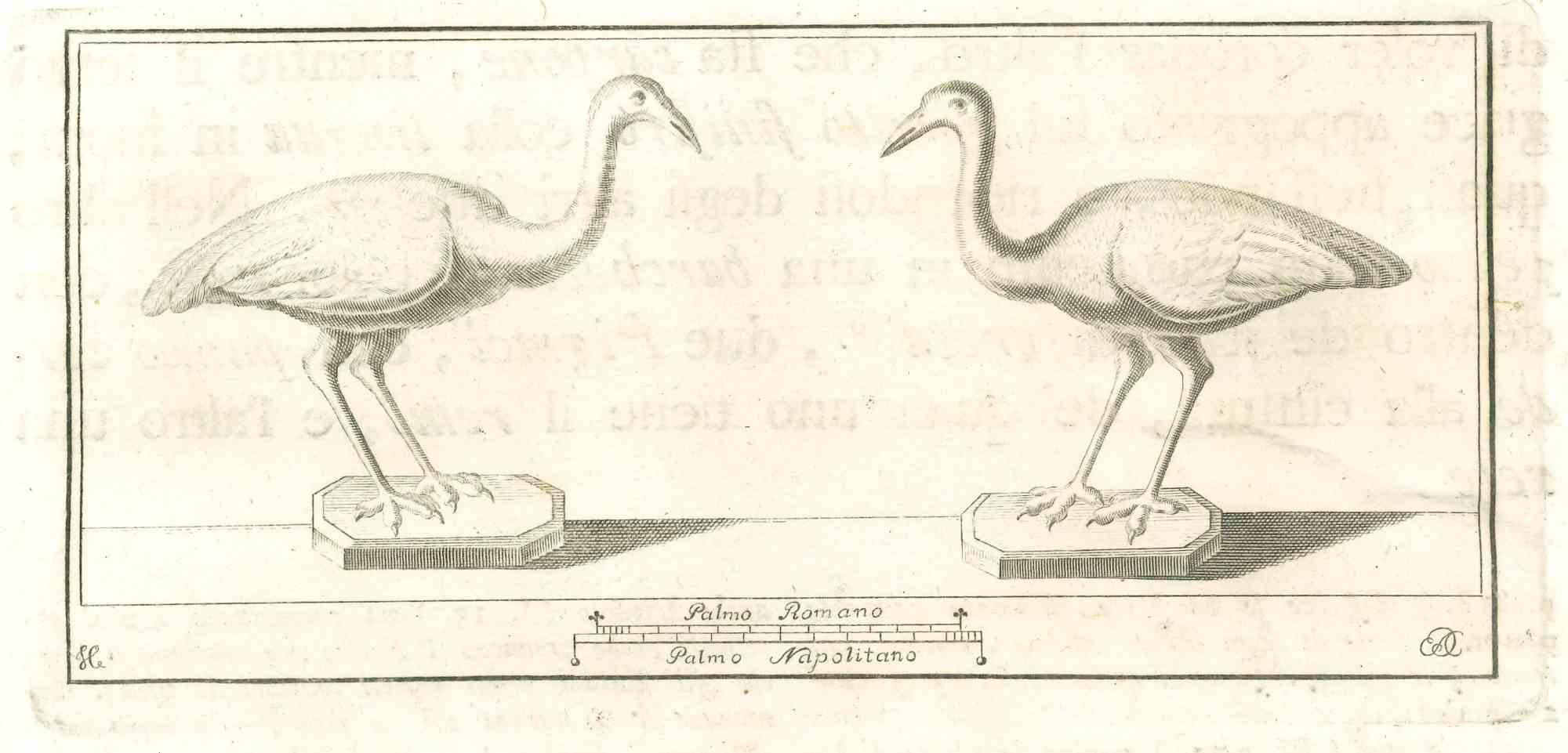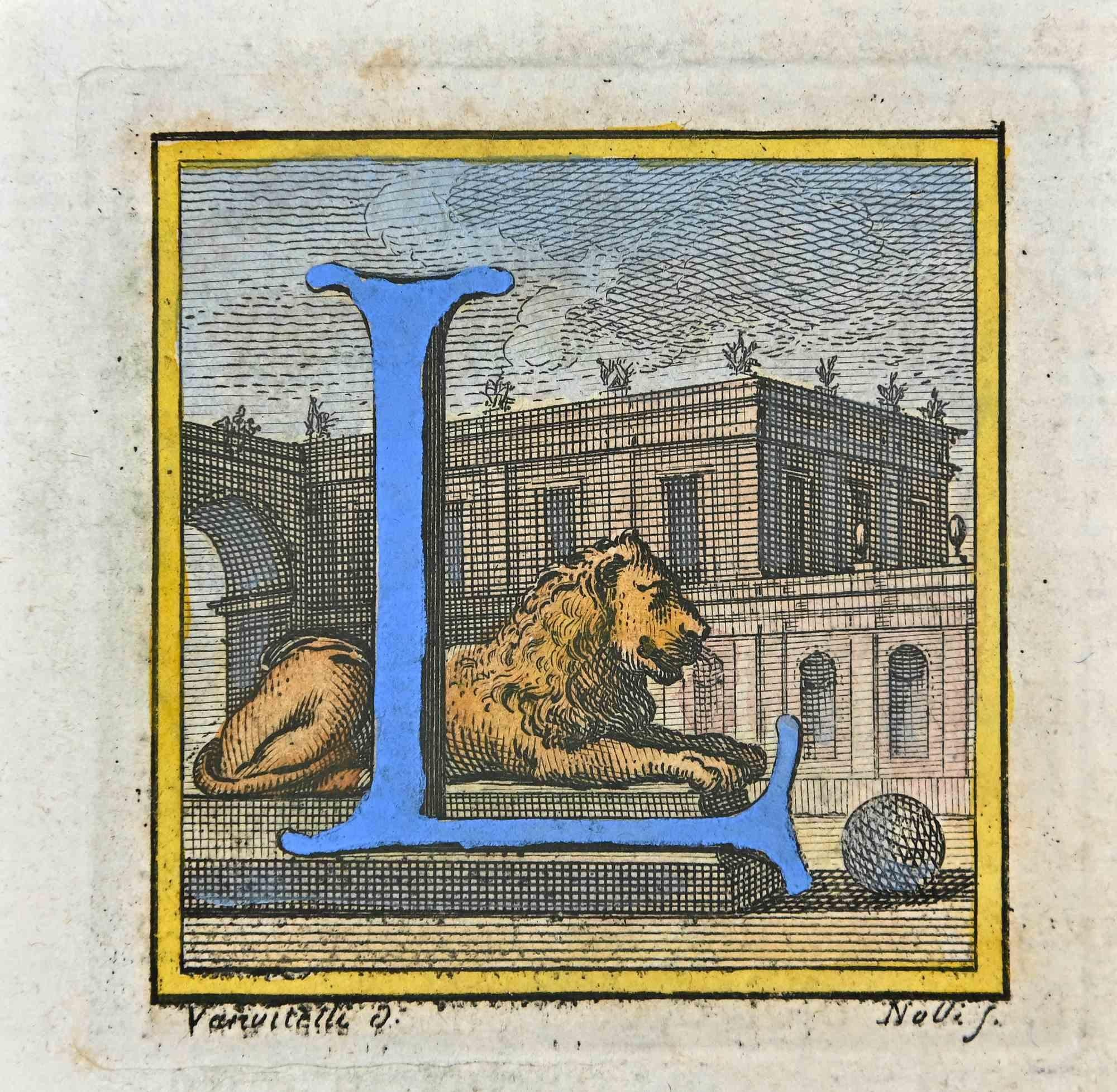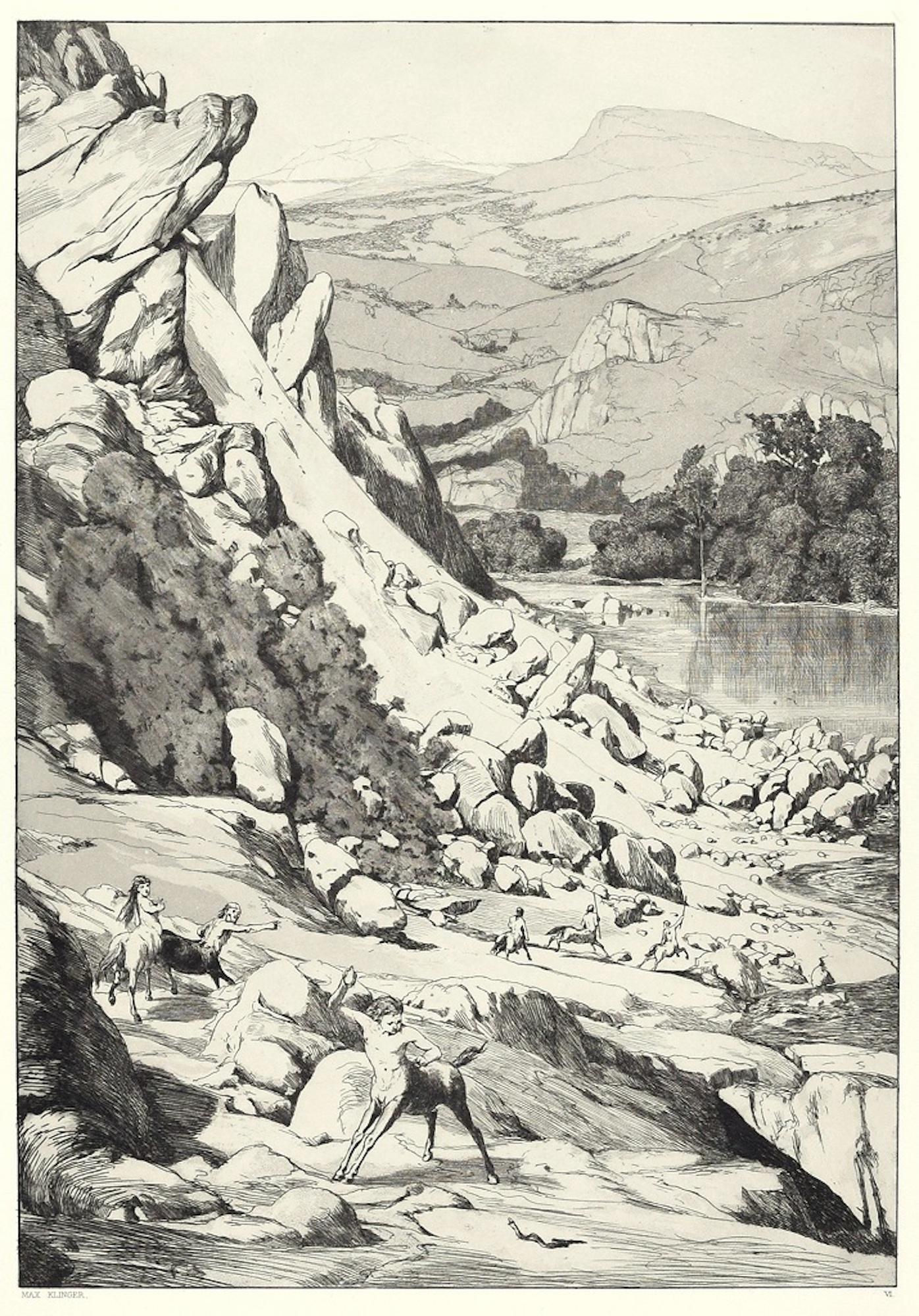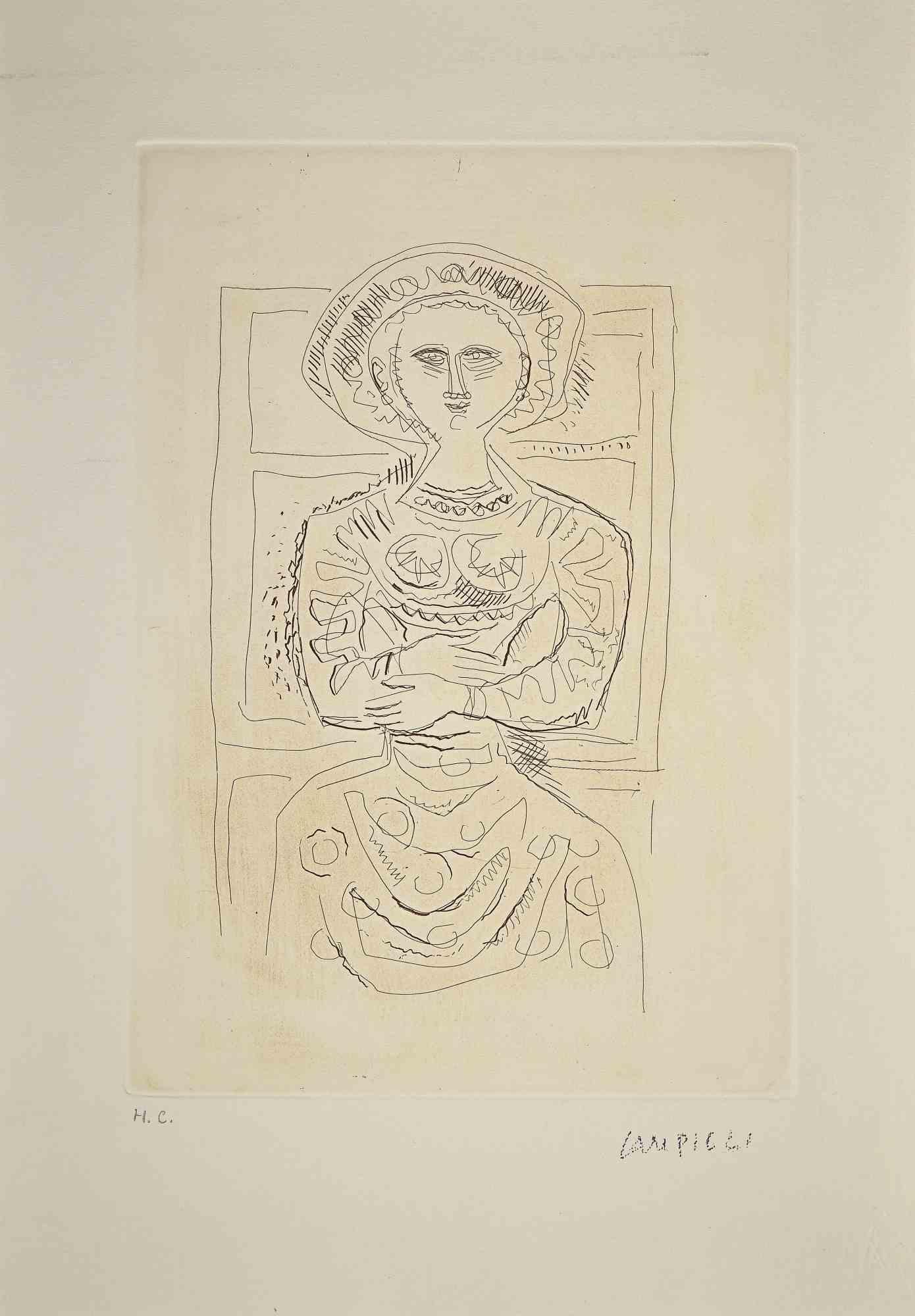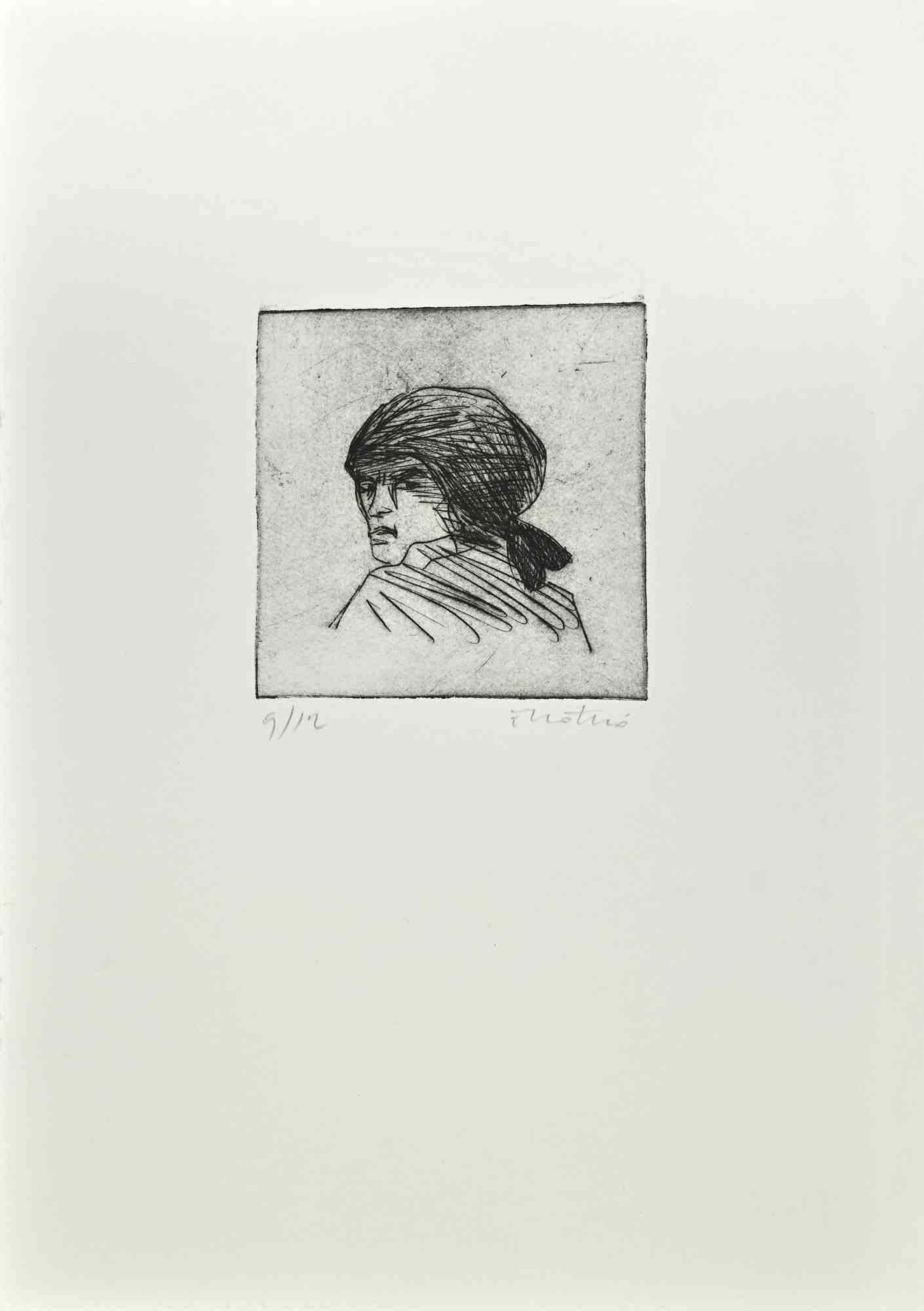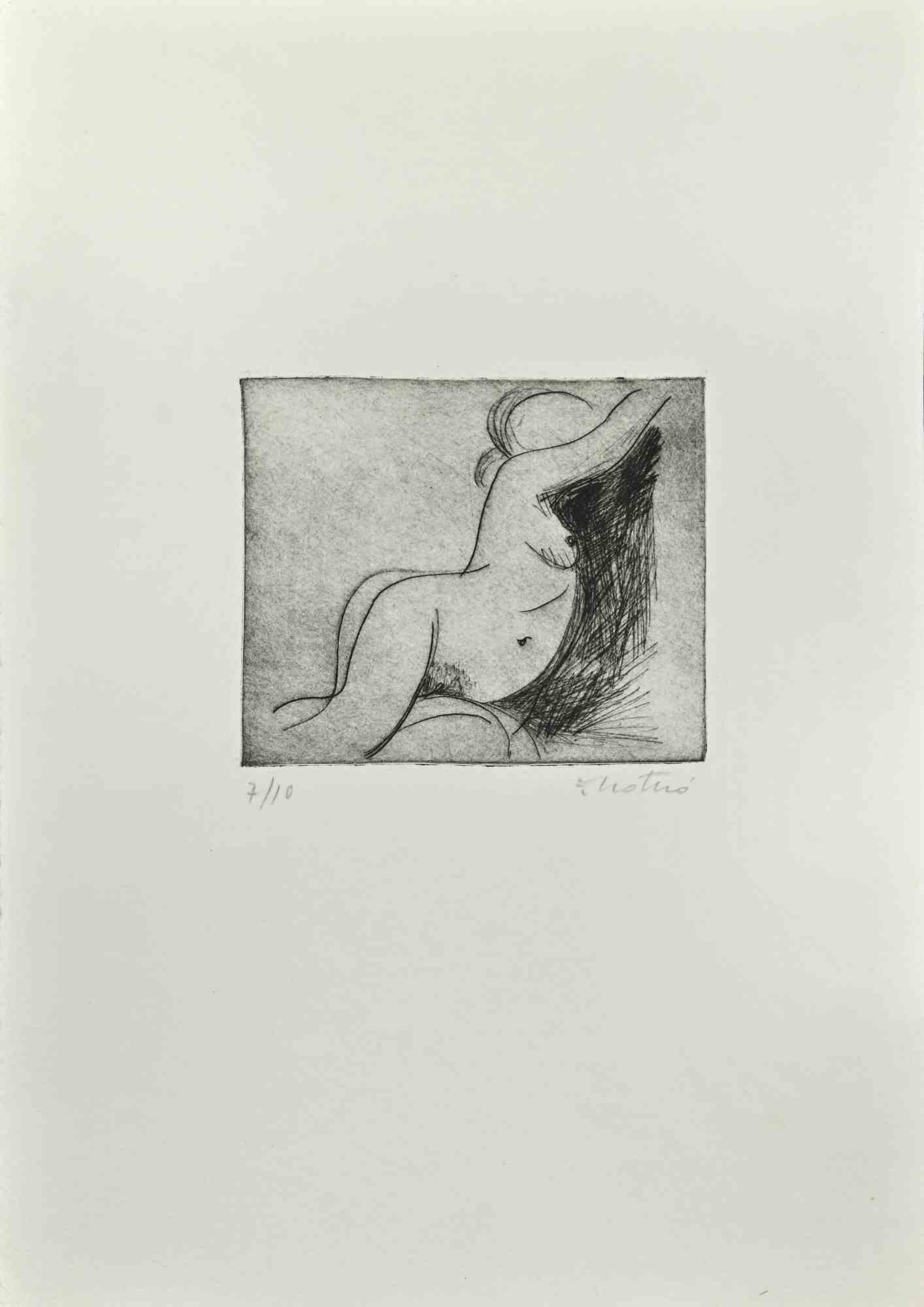Items Similar to Bull - Etching by Antonio Tempesta - 1610s
Want more images or videos?
Request additional images or videos from the seller
1 of 5
Antonio TempestaBull - Etching by Antonio Tempesta - 1610s1610s
1610s
About the Item
Bull is a wonderful black and white etching on thick laid paper, realized by the Italian master Antonio Tempesta (1555-1630).
Image Dimensions: 5 x 7 cm. 8 x 10 cm.
Not signed.
In excellent conditions.
Including a cream-colored cardboard passepartout, 34 x 50 cm.
An exciting original print, with all the dignity of a mythological or epic story, represented with an incredible balance of black and white, light and shadow, and a typical Baroque dynamism.
Antonio Tempesta, also known as Il Tempestino (Florence, 1555 - Rome, 1630), was an Italian painter and engraver of the early Baroque period. Antonio Tempesta trained in the culture of late Mannerism, with a naturalistic but also calligraphic taste, acquired from the frequentation of Giovanni Stradano, with whom he collaborated in the decoration of Palazzo Vecchio.
Moving to Rome in 1573, he worked for Pope Gregory XIII, frescoing some maps of Rome in the Vatican, including the famous Map of Rome (1593). In the pontifical capital, he worked for many noble families and for important cardinals, such as Alessandro Farnese and Scipione Borghese. His works are in San Giovanni dei Fiorentini, at the villa in Caprarola, in Tivoli.
He returned to Florence for a brief stay, where he collaborated with Alessandro Allori, Ludovico Buti, Giovan Maria Butteri and Ludovico Cigoli on the decoration of the ceilings of the Uffizi Gallery on the east side, executed with grotesque drawings. When he returned to Rome, he devoted himself more and more to engraving, with which he gained wide recognition throughout Europe.
He was also a talented draftsman, endowed with a particularly scenographic vein, and other artists printed and spread his work.
- Creator:Antonio Tempesta (1555 - 1630, Italian)
- Creation Year:1610s
- Dimensions:Height: 13.39 in (34 cm)Width: 19.69 in (50 cm)Depth: 0.04 in (1 mm)
- Medium:
- Period:Early 17th Century
- Framing:Framing Options Available
- Condition:Insurance may be requested by customers as additional service, contact us for more information.
- Gallery Location:Roma, IT
- Reference Number:
Antonio Tempesta
Antonio Tempesta was born and trained in Florence and painted in a variety of styles, influenced to some degree by Counter-Maniera or Counter-Mannerism. He enrolled in the Florentine Accademia delle Arti del Disegno in 1576. He was a pupil of Santi di Tito, then of the Flemish painter Johannes Stradanus. He was part of the large team of artists working under Giorgio Vasari on the interior decoration of the Palazzo Vecchio in Florence.
About the Seller
4.9
Platinum Seller
These expertly vetted sellers are 1stDibs' most experienced sellers and are rated highest by our customers.
1stDibs seller since 2017
6,753 sales on 1stDibs
Typical response time: 2 hours
- ShippingRetrieving quote...Ships From: Monaco, Monaco
- Return PolicyA return for this item may be initiated within 14 days of delivery.
More From This SellerView All
- Birds Fresco - Etching - 18th CenturyLocated in Roma, ITBirds Fresco from "Antiquities of Herculaneum" is an etching on paper realized by Various Authors in the 18th Century. Monogrammed on the plate. Good conditions. The etching belon...Category
18th Century Modern Figurative Prints
MaterialsEtching
- Letter of the Alphabet L - Etching by Luigi Vanvitelli - 18th CenturyLocated in Roma, ITLetter of the Alphabet L from the series "Antiquities of Herculaneum", is an etching on paper realized by Luigi Vanvitelli in the 18th century. Signed on the plate. Good condition...Category
Late 18th Century Old Masters Figurative Prints
MaterialsEtching
- Landslide - Etching and Aquatint by Max Klinger - 1881By Max KlingerLocated in Roma, ITImage dimensions: 42.4x29.5 cm. Landslide from "Intermezzi" is an original print realized by Max Klinger in 1881. Signature and number of the print on plate. Black and white etchi...Category
1880s Symbolist Figurative Prints
MaterialsEtching, Aquatint
- The Idol - Original Etching by Massimo Campigli - 1970sLocated in Roma, ITThe Idol is an original print realized by Massimo Campigli in the 1970/1971. Etching on paper. This artwork it is part of a series of works created in the last period of the artist...Category
1970s Contemporary Figurative Prints
MaterialsEtching
- Woman of Calabria - Etching by Enotrio Pugliese - 1963Located in Roma, ITWoman of Calabria is an Etching realized by Enotrio Pugliese in 1963. Limited edition of 12 copies numbered and signed by the artist. Good condition on a white cardboard. Enotrio ...Category
20th Century Contemporary Figurative Prints
MaterialsEtching
- Nude - Etching by Enotrio Pugliese - 1963Located in Roma, ITNude is an Etching realized by Enotrio Pugliese in 1963. Limited edition of 10 copies numbered and signed by the artist. Good condition on a white cardboard. Enotrio Pugliese (May...Category
20th Century Contemporary Figurative Prints
MaterialsEtching
You May Also Like
- Mirror, Graham Fransella, Limited Edition Etching, Affordable Print, Red PrintBy Graham FransellaLocated in Deddington, GBMirror Graham Fransella Limited Edition 4 Panel Etching Etching on Paper Sheet Sizes: H 35.5cm x W 45cm x D 0.1cm Image Size: H 142cm x W 180cm x D 0.1cm Mirror is a limited editi...Category
2010s Abstract Abstract Prints
MaterialsEtching
- Le Viol IIBy Pablo PicassoLocated in Wien, 9- handsigned on the lower right - dated and unreadable inscripted in the plate - from the Suite Vollard - plate size: 19,5 x 27,6 cm; sheetsize: 34 x 44,5 cm - edition of 250 - cat. ...Category
1930s Modern Figurative Prints
MaterialsDrypoint, Etching, Aquatint
- Maison close. Bavardages, avec perroque, Célestine, et le portrait de DegasBy Pablo PicassoLocated in Wien, 9- stampsignature on the lower right - numbered 27/50 lower left - dated in the plate dimanche 4. avril 1971 - Plate 109 from the Suite 156 - cat.raisonné Bloch 1964 - cat.raisonné Ba...Category
1970s Modern Figurative Prints
MaterialsEtching
- Rudolf v. Rittner as Florian Geyer - Last man standing -By Lovis CorinthLocated in Berlin, DELovis Corinth (1858 Tapiau - 1925 Zandvoort), Rudolf von Rittner as Florian Geyer, 1924 (Müller 854), drypoint signed in pencil. 20.4 × 14.2 (plate size), 37.7 × 30.6 cm (sheet size). Published by Karl Nierendorf, Berlin. Framed in a passepartout. - Strong, precise impression. Frame a little bit rubbed and with two small damages. About the artwork The knight is a leitmotif in Lovis Corinth's work, culminating in his Self-Portrait in Armour of 1914. Of all the paintings on this theme, Corinth most often depicted Florian Geyer. Descended from a Franconian noble family, he fought for the freedom of the peasants during the peasant wars of the Reformation, first diplomatically and then militarily, leading the legendary Schwarzen Haufen (Black Troops). The name derives from the black uniforms with which Geyer dressed the peasants willing to fight. During the Napoleonic occupation, the freedom fighter Florian Geyer was sung about by the Romantics, and the free corps Die Schwarze Schaar, founded in 1813 by Major von Lützow, succeeded the Schwarzer Haufen. It was against this historical background that Gerhard Hauptmann wrote the revolutionary drama Florian Geyer, which premiered at the Deutsches Theater in Berlin in 1896. While the actor Rudolf Rittner, who would later appear in Fritz Lang's films, initially played the role of Schäferhans, he took over the leading role in the new production at Berlin's Lessing Theatre in 1904, again directed by Emil Lessing, which established his fame as an actor. Hauptmann himself praised the acting. He wrote to Hugo von Hofmannsthal: "It went quite well with Florian Geyer. In any case, I had the great pleasure of seeing the play again in an admirable performance". And Lovis Corinth was so taken with Rittner's performance that he painted an oil portrait of him in the role of Florian Geyer in 1906. After two further graphic versions in 1915 and 1920/21, Corinth returned to the painting a year before his death and almost twenty years after the oil painting to create this graphic version in 1924. Even the inscription in the picture was taken over. This proves all the more the importance of the knight and freedom fighter for Corinth's self-image. The oil painting, in particular, proclaims the single-minded determination to fight to the last for the values defended, manifested in the oil painting by the tattered flag held out to the enemy. There is a parallel with Rainer Maria Rilke's 1899 story The Cornet, in which the protagonist goes down with the flag that he first saved at the risk of his life. Consequently, the portrait is also a self-portrait, and the knight's armour is not an academic costume or an ironic refraction, but an expression of Corinth's self-image, which also includes his self-representation as an artist. The Secession poster...Category
1920s Expressionist Figurative Prints
MaterialsEtching
- La teteBy Dado (Miodrag Djuric)Located in Ljubljana, SILa tete (eng. The head). Original hand colored etching, 1974. Edition of E.A. (artist’s proof) signed and numbered impressions on Arches paper. Miodrag Dado Đurić was a famous figura...Category
1970s Post-Modern Abstract Prints
MaterialsEtching
- Half-length portrait of a man with beard - A Rembrandt of the 18th century -Located in Berlin, DEJohann Friedrich Bause (1738 Halle a. d. Saale - 1814 Weimar). Half-length portrait of a man with beard and cap after a drawing by Christian Wilhelm Ernst Dietrich. Etching and coppe...Category
1780s Baroque Figurative Prints
MaterialsEtching
Recently Viewed
View AllMore Ways To Browse
Antique Bull
Black And White Baroque Art
San Antonio Antique
Antique Black Ceiling Light
Map Of Rome
Map Rome
Rome Maps
Antique White Ceiling Light
Florence Map
Map Of Florence
Drawing Engraving 17th
Pope Engraving
Borghese Prints
Antique Maps Rome
Antique Map Rome
Antique Rome Map
Antique Map Of Rome
Rome Antique Map
